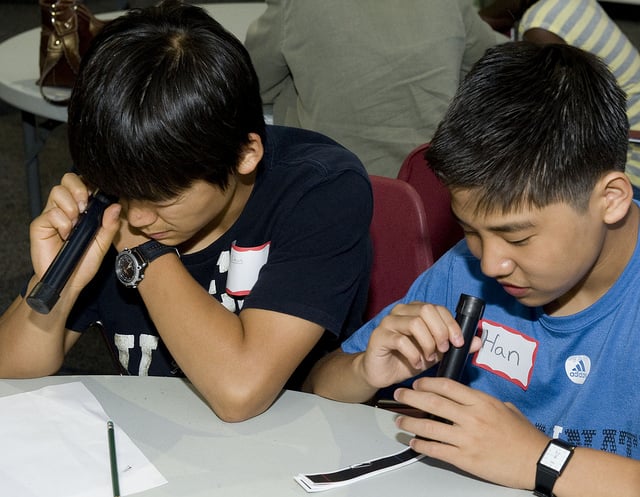The Pocket Spectroscope: A Quick Guide for Gemologists
An inexpensive pocket spectroscope can be great for student gemologists as well as pros who need to identify gems while traveling. Learn the basics here.
1 Minute Read
There's another bit of kit that this tool seems to fit into. It's a black plastic contraption. At the top is a hole and another piece of plastic that turns around. This plastic piece has varying sizes of holes around the top.
I hope my description isn't too vague. Can you help me identify what this is and how to use it correctly?
Answer: I recognize this device. It's a pocket spectroscope and stand made by Orwin Products Ltd. The spectroscope is used in many fields, from astronomy to industry and also gemology. Portable models are very useful.
What Can a Portable Spectroscope Do?
Gemologists use spectroscopes to see a gem's absorption spectrum. Learning how a gemstone interacts with light is a key step to identifying it. This can even indicate if the stone is natural or synthetic. An inexpensive pocket spectroscope is useful for aspiring students as well as professional gemologists who need to identify specimens, including rough, while away from their labs.
How to Use a Portable Spectroscope
The spectroscope is a fundamental tool for gemologists. To use a portable spectroscope, line up these things in this order: light source, stone specimen, the instrument, and your eye. To interpret what you're seeing, you'll need to review the basics of spectroscope operation and gemstone identification.
The black contraption is a stand to help you hold stones of various sizes over the opening. There are some tricks to using this.
First, everything has to be held VERY still. Most people prefer using a stand or mount rather than trying to hold the instrument in their hands. (There are even adapters for mounting a pocket spectroscope in a microscope).
Second, you need a lot of light. It takes practice to get enough light through the stone and into the pocket spectroscope to be able to read it. You'll find the OPL pocket spectroscope isn't useful for dark stones. Start practicing with something light and one carat or above.
Best wishes,
Donald Clark, CSM IMG
Portable Spectroscope Recommendations
Buy List
Budget
Budget
Budget
Budget
International Gem Society
Related Articles
Ruby and Sapphire Survey: Where Do You Draw the Line?
Can Wearing Gems That Touch Your Skin Improve Your Health?
Is Xinjiang Nephrite Banned in the US?
Why are Topaz and Citrine Gemstones Misidentified?
Latest Articles
800 Years of Mogok: A Celebration in Tenuous Times
What is the Average Gemstone Faceting Yield?
Pyroxmangite Value, Price, and Jewelry Information
How to Identify Emerald Simulants and Synthetics
Never Stop Learning
When you join the IGS community, you get trusted diamond & gemstone information when you need it.
Get Gemology Insights
Get started with the International Gem Society’s free guide to gemstone identification. Join our weekly newsletter & get a free copy of the Gem ID Checklist!
